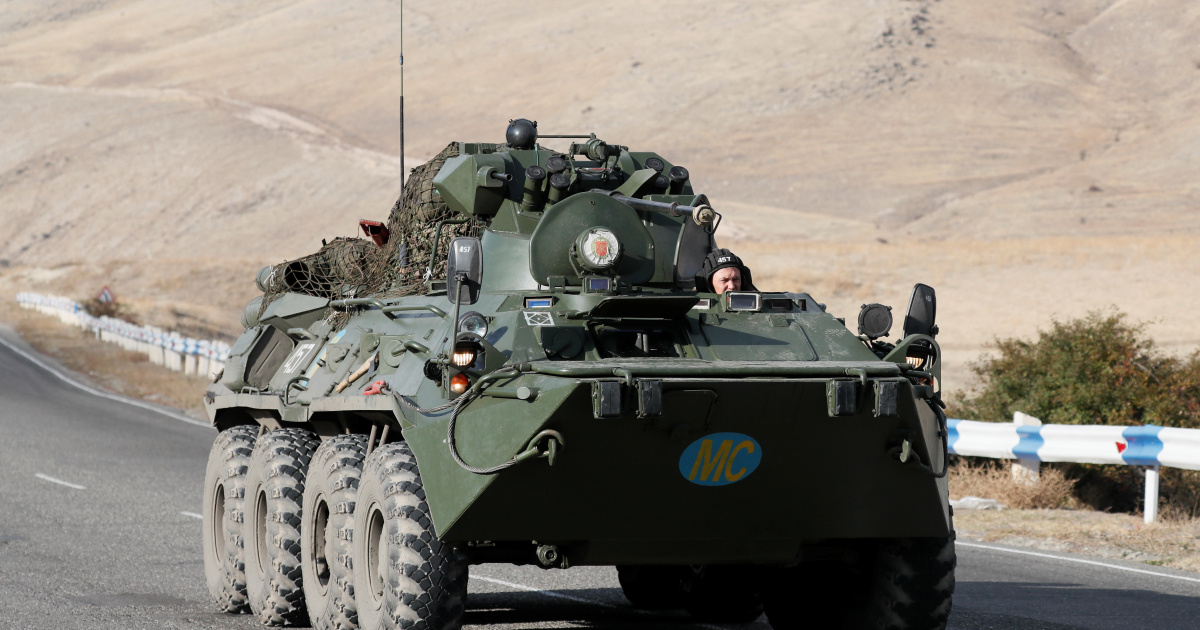Armenia and Azerbaijan entered into conflict over Nagorno-Karabakh, as they fought a separatist war in the early 1990s.
Villagers in Nagorno Karabakh set fire to their homes on Saturday before fleeing to Armenia ahead of a weekend deadline that will see parts of the region be handed over to Azerbaijan as part of a peace agreement.
Residents of the Kalbajar region in Azerbaijan, which has been dominated by Armenian separatists for decades, began a mass exodus this week after announcing that Azerbaijan would regain control on Sunday.
Fighting between separatists backed by Armenian forces and the Azerbaijani army broke out in late September and lasted for six weeks.
On Saturday, Armenia announced that 2,317 soldiers had been killed in the conflict that forced thousands to flee their homes.
“So far, the forensic service has examined the bodies of 2,317 dead soldiers, including unidentified ones,” wrote the Armenian Ministry of Health spokeswoman Alina Nikogossian on Facebook, registering an increase of nearly 1,000 deaths compared to the last confirmed death toll among Armenian fighters.
Their house burned
In the village of Charektar – on the border with the neighboring Martakert District, which will remain under Armenian control – at least six homes were set ablaze on Saturday morning as thick columns of gray smoke billowed over the valley.
“This is my house, I cannot leave it to the Turks,” as the Armenians call the Azerbaijanis, one resident said as he threw burning boards and rags soaked in gasoline into a completely empty house.
He said, “Everyone will burn their house today … Give us until midnight to leave.”
On Friday, at least 10 homes in and around Charitar were torched.
Former Soviet adversaries agreed to end hostilities earlier this week after previous ceasefire efforts by Russia, France and the United States had failed.
A major part of the peace agreement includes the return of Armenia as al-Baggar, as well as the Agdam region by 20 November, and the Lachin region by December 1, which the Armenians have controlled since a devastating war in the 1990s.
Today, Saturday, Azerbaijan and Armenia exchanged bodies of soldiers killed in clashes around the city of Susha in the Upper Karabakh region, according to the Azerbaijani Defense Ministry.
“Within the framework of this humanitarian action, the bodies of the dead soldiers of the Armenian armed forces were collected and delivered to the Armenian side,” a statement said. “Also, as part of this work, the bodies of six Azerbaijani army soldiers. “
Russian peacekeepers
Russian military officials said a mission of about 2,000 soldiers would set up 16 observation posts in the mountainous Nagorno-Karabakh region and along the Lachin Pass.
Russian military helicopters escorted a convoy of peacekeepers from the Erebuni military base in Armenia to Nagorno Karabakh on Saturday.
The peacekeepers traveled in a column containing armored personnel carriers and other military vehicles.
Russian peacekeepers set up a total of 10 observation points in Karabakh and took control of the Lachin Pass, which connects the mountainous region to Armenia.
Under the ceasefire agreement signed by the leaders of Armenia, Azerbaijan and Russia, peacekeepers were mandated to monitor armistice violations, ensure transportation safety and stop any crimes against the civilian population.
Armenia and Azerbaijan have been locked in a decades-old conflict over Nagorno-Karabakh, having fought a separatist war in the early 1990s until three years after the dissolution of the Soviet Union.
The Caucasus Mountains have an area of about 4,400 square kilometers (1,700 square miles) 50 kilometers (30 miles) from the Armenian border.
It has been under the control of Armenian ethnic forces and the Armenian army since the end of 1994 of a large-scale separatist war that killed around 30,000 people and displaced an estimated one million people.

Typical creator. Subtly charming web advocate. Infuriatingly humble beer aficionado.

